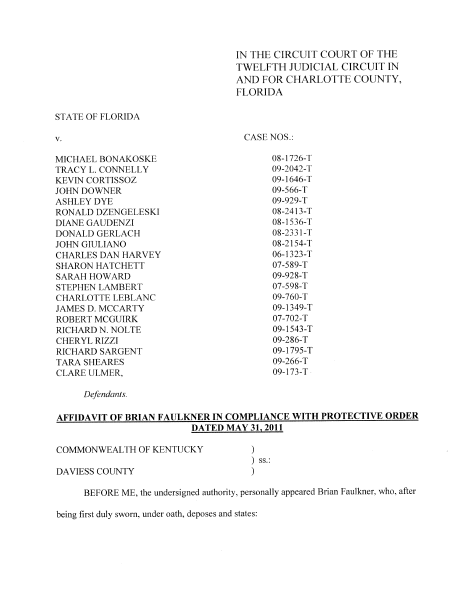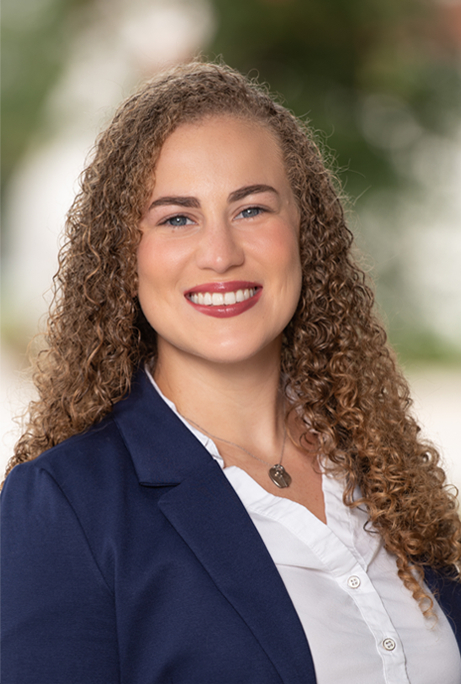CMI Lost the Source Code on the Intoxilyzer 8000 – Now What?
Some how the media has yet to catch on to this new development that may impact how DUI cases through the United States are prosecuted for years to come. CMI lost the source code for the “Intoxilyzer 8000” on the conforming products list. Only one version of the “Intoxilyzer 8000” is listed on the conforming products list. (On the other hand, the Intoxilyzer 5000 had 5 different versions listed on the conforming products list). This news alone may impact the use of the Intoxilyzer 8000 throughout the 20 states across the US that use these machine for breath testing in DUI cases.
Furthermore, CMI lost the source code for the only instrument “approved” for use in Florida in 2002. Since the Florida Department of Law Enforcement can only “approve” an instrument on the conforming products list, the version of the Intoxilyzer 8000 approved in Florida may not really be an “approved instrument.”
When is a Conforming Product Not Conforming?
Although the Intoxilyzer 8000 is suppose to be a “conforming product,” each state is allowed to configure the software for their particular state. These configurations involve more than just changing the font or running reports. The configurations may involve the mathematical calculations involved in how the instrument determines:
- whether a valid sample was submitted;
- the minimum volume of breath was blown into the machine;
- whether mouth alcohol is present;
- whether the slope is not level;
- whether the slope is not met;
- whether interferent is detected;
- whether a control is outside of tolerance which indicates a problem with the calibration;
- whether an “ambient fail” flag is provided which indicates that ethanol or another substance that mimics ethanol is present; and
- whether a host of other “flag” are shown.
In short, without the source code, criminal defense attorneys cannot know whether the instrument evaluated for inclusion on the Conforming Products list has any similarities with the instrument “approved” in their particular state. Furthermore, at least in Florida, DUI defense attorneys cannot know whether the only instrument “approved” for use in Florida has any similarities with the machine used when their client submitted a sample after being arrested for DUI.
Metaphysics of the Intoxilyzer 8000’s Identity
What does it mean for an instrument to be called an “Intoxilyzer 8000” if all traces of its original source code have been destroyed or are no longer possessed by the company that manufactures the instrument?
If the Intoxilyzer 8000 changes with each software revision and the software revisions are unknown, how can the 26th or 27th version used in Florida be the same as the “evaluation software” for the instrument on the conforming products list?
What Due Process and Confrontation Clause issues are presented when the manufacturer of the instrument destroys the source code, revision histories and engineering notes while litigation to obtain that information has been pending in Florida and other states?
If the source code has gone through so many revisions, how do we know how many revisions the hardware has gone through?
The Analytical Foundation of CMI’s Intoxilyzer 8000
The current Manager of Engineering at CMI, Inc, Brian Faulker, filed this affidavit in Charolotte County, FL. The affidavit shows that CMI’s Manager of Engineering has reviewed CMI’s “relevant existing records” relating to the source code for the Intoxilyzer 8000. According to the affidavit, the Intoxilyzer 8000 submitted for testing and inclusion in National Highway Traffic Safety Administration (NHTSA) Conforming Product List serves as the “analytical foundation” for all Intoxilyzer 8000s manufactured and sold by CMI, Inc.
After inclusion on the conforming product’s list, the “evaluation source code is not retained separately and therefore cannot be produced.” Furthermore, the affidavit provides:
“CMI is unable to produce, with any degree of certainty, each and every section of source code from software revisions that were not put into service by the customer. Consequently, CMI cannot reliably reconstruct version 8100.10 which directly corresponds to software versions 8100.10 included in the instrument initially tested, but not utilized by the Florida Department of Law Enforcement.”
The affidavit was dated May 31, 2011, but was notarized by Brian Faulkner on June 3, 2011.
The next affidavit was notarized by Brian Faulkner on July 8, 2011 and was subsequently filed in Duval County in support of CMI’s Motion in Opposition to Defendant’s Notice of Non-Compliance and Request for Sanctions.
It provides in part:
” 5. As anticipated, the entire Source Code set for the two software revisions ever used for evidential testing in Florida – revisions 8100.26 and 8100.27 – were made available to and examined by Dr. Myler in their native electronic format. All of the remaining items listed on Exhibit “A” attached to this affidavit were also available for inspection and examination by Dr. Myler and the attorneys [Stuart Hyman and Joerg Jaeger] with the exception of the revision history for revisions 8100 through 8100.13 of the Intoxilyzer software.
6. The revision history, consisting of revision notes, for revisions 8100.13 through 8100.27 were grouped together based on those revisions that were released to Florida Department of Law Enforcement (“FDLE”). Not all revisions were released to FDLE.
7. In the days leading up to the examination of the Source Code, as CMI continued to compile the materials for the court-ordered examination, it first became apparent that CMI’s records did not include any engineering notes for revisions to the Intoxilyzer 8000 software predating and including revision 8100.13.
8. CMI continued its efforts to locate those engineering notes right up to the first day of the Source Code examination, but to no avail. Absent such notes, it is not possible for CMI to assemble a revision history that would encompass the earliest revisions to the software.
9. CMI presently has no way of verifying what revision of the software was included in the Intoxilyzer 8000 submitted to the NHTSA for inclusion in that agency’s Conforming Products List. Consequently, there is no way to ascertain what components of the Source Code would relate to the software revision included in the instruments submitted to NHTSA ten years ago in 2001. As such, neither the Source Code for that software revision nor the engineering notes reflecting subsequent changes to that revision can be produced.
10. Additionally, there is presently no way for CMI to verify what aspects of the Source Code correspond to software revisions 8100.10, which was submitted in 2002 to FDLE in connection with approval of the Intoxilyzer 8000. As a result, there is presently no way for CMI to reconstitute the Source Code for that software revision such that it can be known, for a fact, that it corresponds to the software revision 8100.10 submitted to FDLE. Therefore, neither the software revision nor the engineering notes reflecting subsequent changes thereto before revision 8100.13 can be reliably produced.
11. Since neither the original revision of the software included in the instruments supplied to NHTSA nor revision 8100.10, which was included in the instrument originally submitted to FDLE, was ever actually used for evidential testing in Florida, the engineering notes pertaining to those revisions were never created. At no time since the subpoenas in this case were served did CMI destroy or discard any portion of the revision history or related engineering notes.
12. Intoxilyzer 8000 instruments with software revisions 8100.26 and 8100.27 were resubmitted to NHTSA for reevaluation in 2007, at the request of FDLE, and NHSTA determined the instruments running those revisions to be in compliance for products listed on its Conforming Products List.”
How do you think this bombshell development might impact source code litigation in other states using the Intoxilyzer 8000? We love hearing from other DUI defense lawyers in states using the Intoxilyzer 8000. The destruction or loss of the source code changes everything.
1 comment
Comments are closed.
Free Consultation
Submit this form to request a free and confidential consultation with one of our attorneys.
Our Office Locations
Tampa Office:
Sammis Law Firm, P.A.
1005 N. Marion St.
Tampa, FL 33602
(813) 250-0200
New Port Richey Office:
Sammis Law Firm, P.A.
7509 Little Rd.
New Port Richey, FL 34654
(727) 807-6392
Clearwater Office:
Sammis Law Firm, P.A.
14010 Roosevelt Blvd. #701
Clearwater, FL 33762
(727) 210-7004









I was wrongly convicted of a dui charge in Oregon state in 2007. I make biodiesel and accidently poisoned myself with a methanol spill. The Intoxilyzer
8000 cannot distinguish between methanol and ethanol!!!! I had an expert witness show the overlap of the two compounds. The results of the mishap were a trip to the emergency room after going through
first convulsions then into a coma. The States expert witness stated that my witness (who has a list of qualifications and publishments was “All wrong and that the 8000 could definitely
separate the two”. PNNL here has the same info. My blood sample in the hospital showed no ethanol (they didn’t
test for methanol) but 227mmols of blood ammonia, a sure give away for methanol poisoning! The 8000 btw is an old Commadore make ie: not gb’s or mb’s but kilobytes! You do not have to drink methanol to be poisoned but can also be a result of absorption or inhalation.
There is a great deal more to this saga and if you could e-mail me I would like to elaborate as this is still ongoing in a sense. I need some good help not a court appointed yes man. tks in advance Gary